Disclosure: Meeple Mountain received a free copy of this product in exchange for an honest, unbiased review. This review is not intended to be an endorsement.
Recognizing the overwhelming threat that natural disasters pose to humanity, the nations of the world have taken action and created the Crisis Response Unit: an elite team of doctors and specialists who prepare life-saving supplies on their specially equipped plane, then deliver them to cities around the world.
Hi, I’m Smash and I’ll be parachuting in throughout this review to comment on Pandemic: Rapid Response’s gameplay.
Pandemic: Rapid Response is a cooperative real-time game set in the Pandemic universe that uses dice as the main mechanism by which players take actions. Designed by Kane Klenko, Pandemic: Rapid Response will feel familiar to anyone who has played Klenko’s games like Fuse or Proving Grounds, most notably how the dice are used within a real-time setting.
Wait. Isn’t there already a Pandemic dice game?
In 2014 Z-Man Games released Pandemic: The Cure, a dice version of Pandemic. While The Cure is very much a dice-based reimplementation of the original Pandemic system, Rapid Response is not. The way the dice are used, the real-time element, and its gameplay overall set it apart from The Cure.
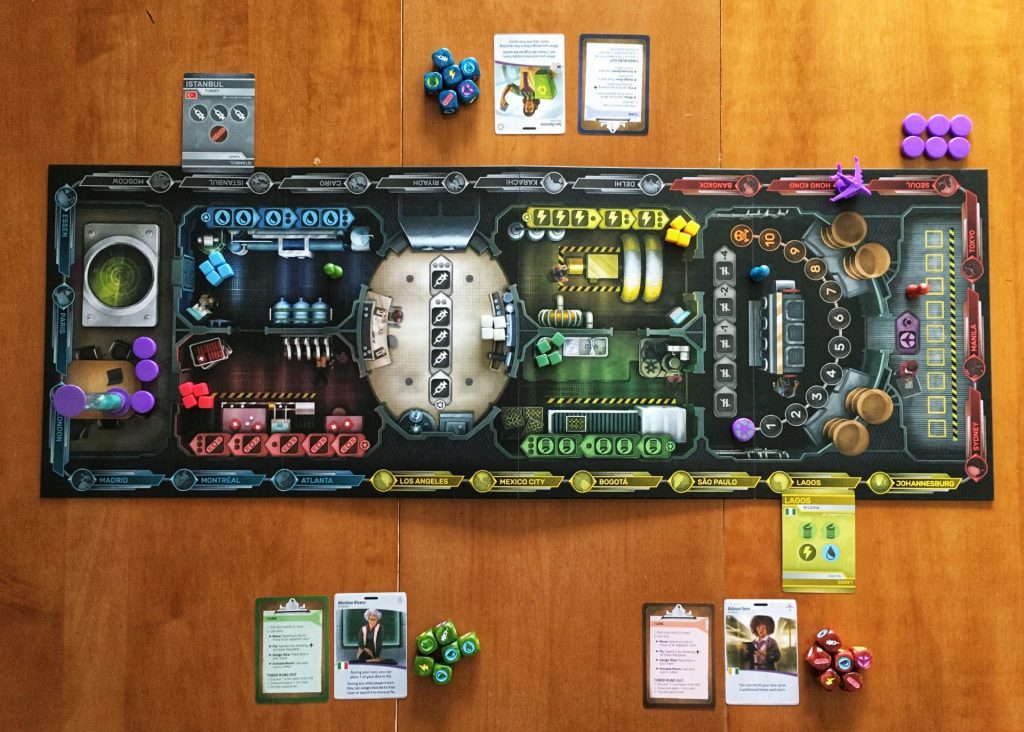
Start The Clock
Pandemic: Rapid Response is played over a series of two-minute intervals with each player taking a turn and performing actions one at a time. The two-minute sand timer is always running so it’s important to pay attention and to not waste valuable time. Once the sand timer runs out, the turn is paused and one Time token is returned to the box from the board. If players need to spend a Time token and there are none on the board, they lose the game.
Additionally one City card is revealed and added to the game whenever the sand timer runs out.
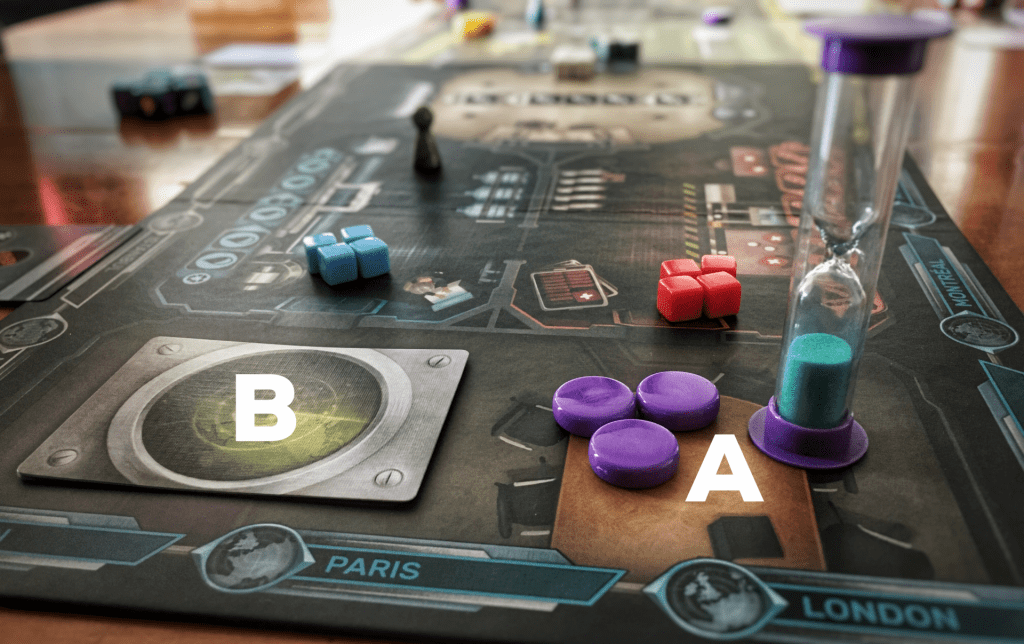
On your turn, you roll all of your dice and take actions in the hope of creating the necessary supplies to satisfy the cities in need. If players accomplish this and deliver to all the cities, they win the game.
A game of Pandemic: Rapid Response always begins with at least two City cards faceup on the board at their locations. There will also be a number of City cards facedown by the sand timer depending on the difficulty players have chosen (three for an Easy game and up to nine for a Heroic game). To win, players must deliver to all the cities, not just those faceup on the board.
There is only one copy of each City card in the game so while City cards in the facedown deck are unknown, players can eliminate possibilities as the game progresses.
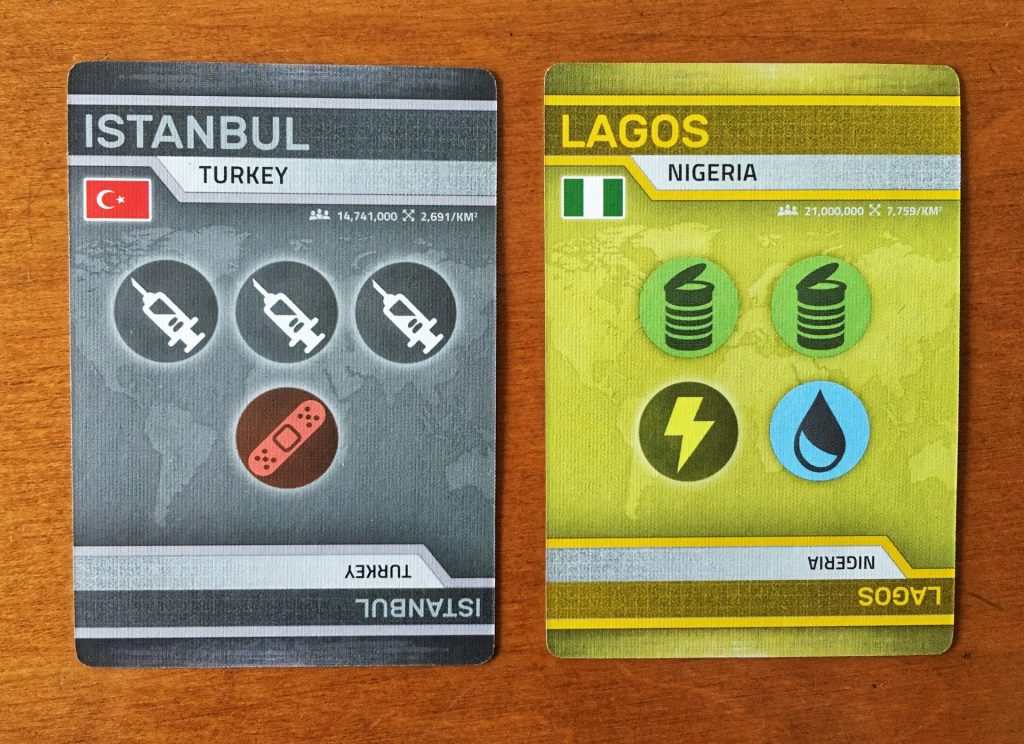
Player Turn
On the very first turn of the game, the start player flips the timer. They then roll all the dice on their Role card (in front of them) and decide which to keep, assign, or spend, and which to reroll. A player has two rerolls they’re permitted to use any time on their turn.
This means that you could assign two dice, reroll some, assign more dice, and reroll your remaining dice again.
Let’s now take a closer look at how the dice are used to perform actions.
Moving and Flying
Each player has a Role card and their player pawn starts in their role’s designated area on the plane (read: the board), but you’ll need to move around the plane if you want to accomplish anything. To move, spend any dice — regardless of what’s showing on the rolled face — to move to one connected area for each die spent.
“Spending” dice means placing dice on your Role card, which then become available to you on your next turn.
To deliver supplies to a city, your plane must be in that city (this seems like a pretty obvious rule, but alas I’ve mentioned it anyway). The Rapid Response plane is unlike any other and you can use the fly action in any area of the board to move the plane. Fancy!
To fly, spend dice showing the “plane” symbol and move the plane one space — clockwise or counterclockwise — for each die spent.
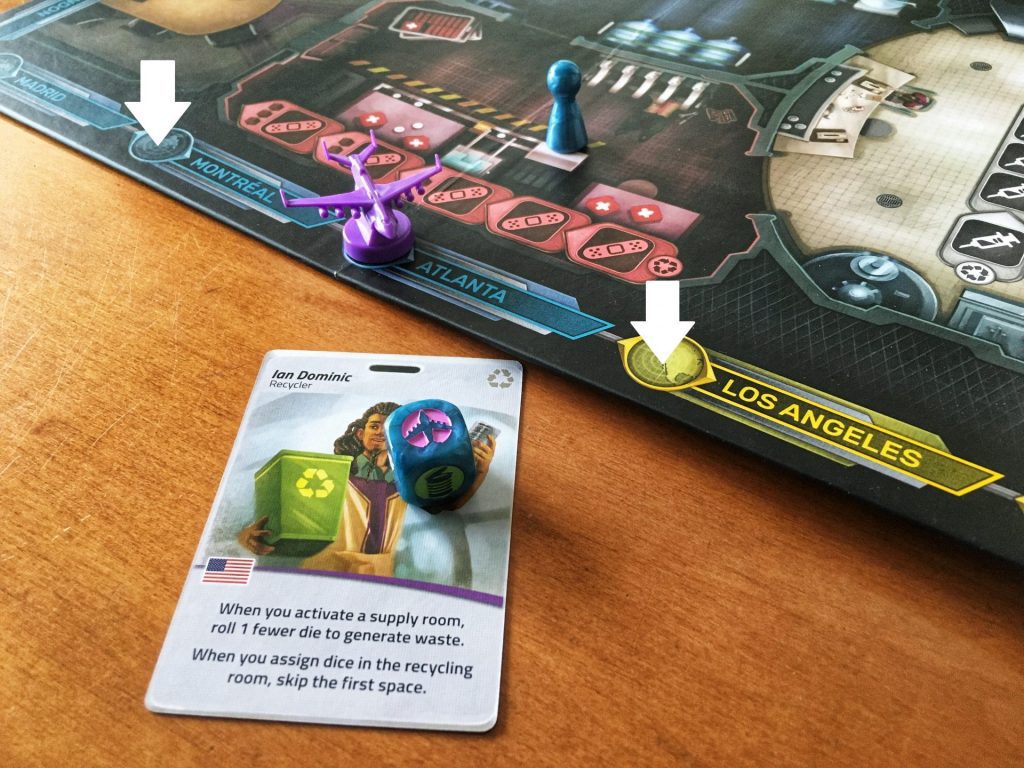
The plane symbol also has another use that we’ll explore shortly.
Supply Rooms
Most of your turns in Pandemic: Rapid Response will be spent making supplies for the cities in need (this is the point of the game after all). There are five different types of supplies, each with their own supply room and represented by their own symbol on the dice.
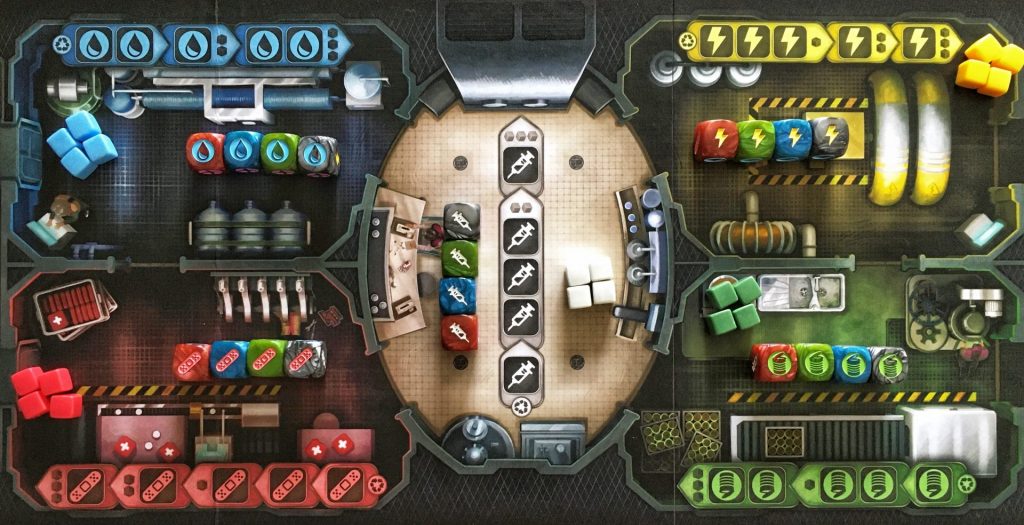
To make supplies, you must be in a supply room and assign a number of dice to the grouped spaces.
Dice in a single grouping must be assigned all at once by the same player. This means that the bigger the grouping, the more difficult it’s going to be to assign dice and make the supplies.
Dice must also be assigned in the direction of the supply room’s arrow.
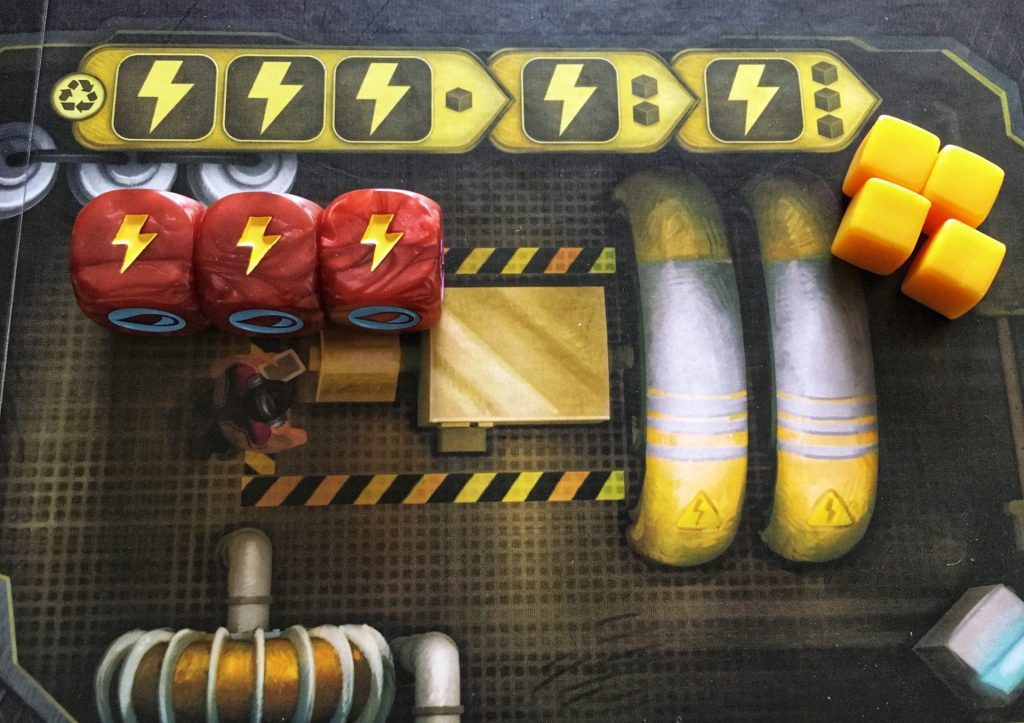
These rules apply to each of the five different supplies.
Thankfully players can work cooperatively to gain supplies, meaning that anyone can assign dice to a supply room regardless of whether another player has already assigned dice there.
Dice that are assigned remain locked on a space until a room is activated.
Carefully managing your dice is a huge part of Pandemic: Rapid Response. You don’t want to have turns where you only have a couple of dice to roll because your other dice are locked on the board.
Once a supply room has enough dice assigned, it can be activated by any player in the room, not just those who assigned dice.
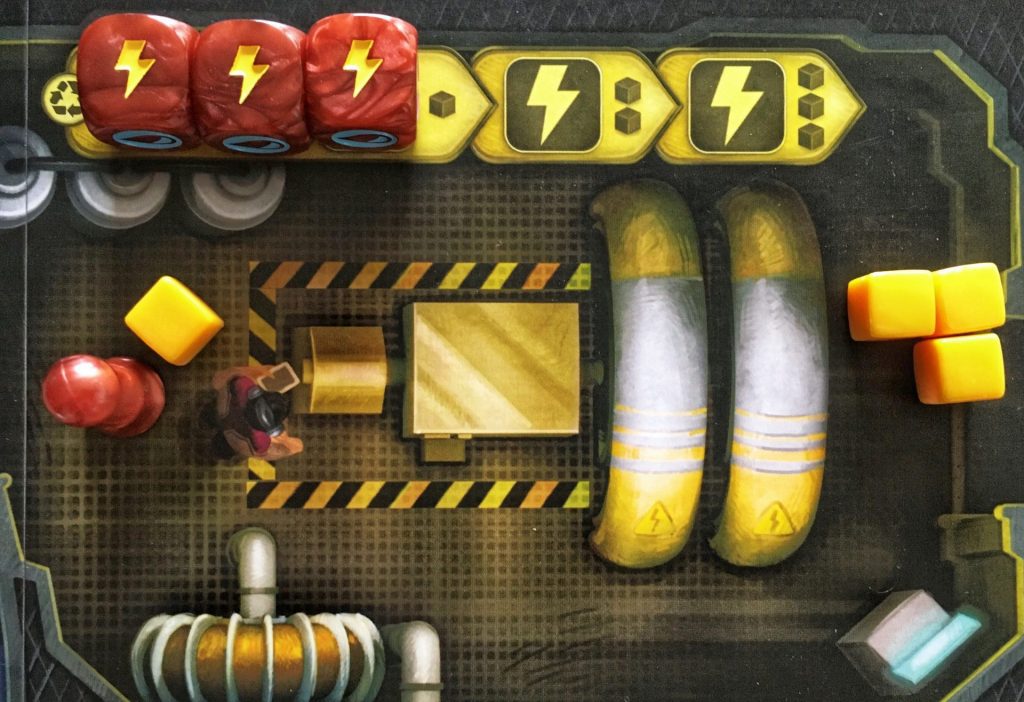
The more dice assigned to a room, the more powerful its effect is.
In the previous picture, if one more die had been assigned before it was activated, then Red would have received two cubes instead of one.
Players then gain a number of cubes and add them to the spaces on the cargo bay.
Waste – This Is Why It Pays To Be Green
As part of the room activation, a player must roll the dice assigned to the room to represent the waste generated by creating the supplies. For each symbol rolled that is surrounded by a circle, the Waster marker advances one space. If this marker reaches the last (masked skull) space, players lose the game.
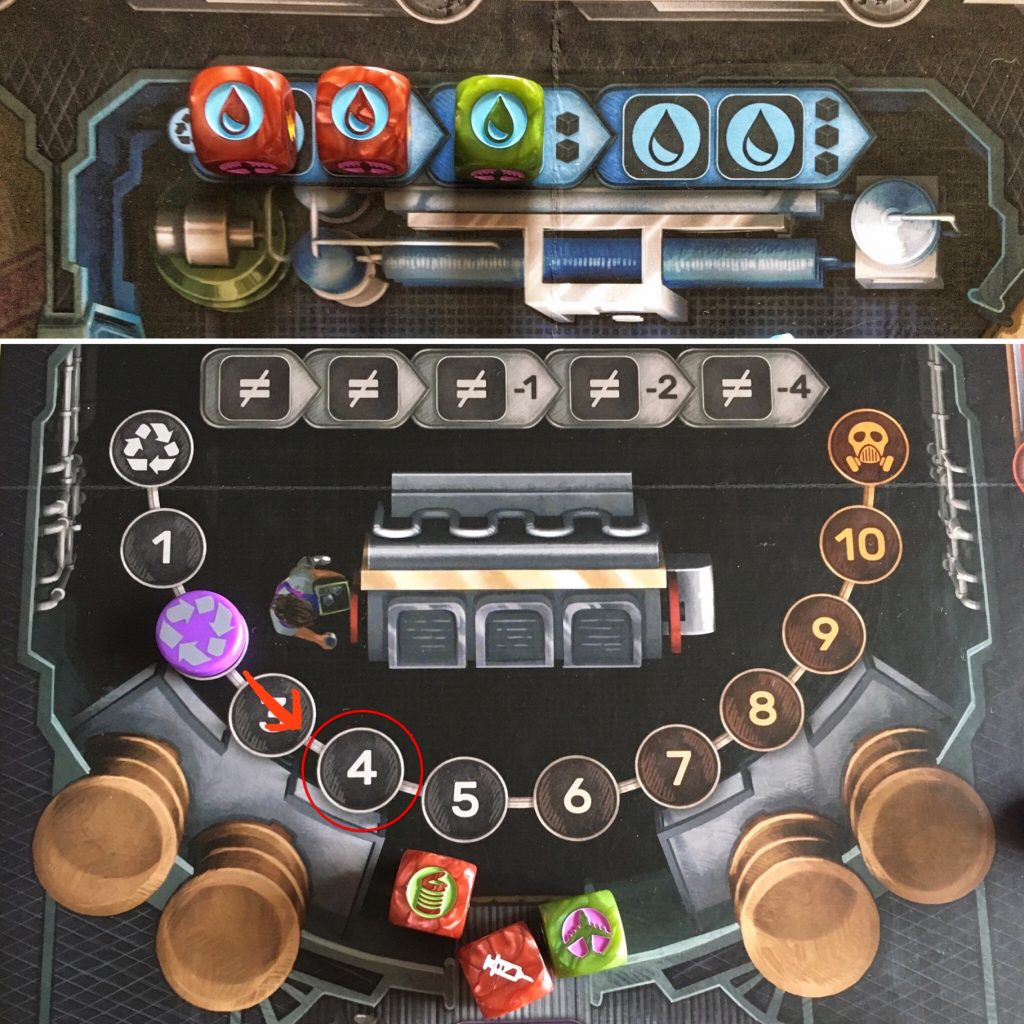
These dice are then returned to their respective player’s Role card.
Recycling Center
Thankfully there is a way to reduce waste in the recycling center. Dice assigned here must show a unique face and once activated the Waste marker moves back one, two, or four spaces.
Cargo Bay
The cargo bay is where the plane’s supplies are stored, but also where a player must be to deliver to a city. To make a delivery:
- the plane must be in the city you want to deliver to and
- all required supplies must be in the cargo bay; you can’t deliver a few at a time.
Then, in the cargo bay, a player spends a die showing the plane symbol to make the delivery, returning the supplies to their supply rooms, and removing the City card from the game. Finally a Time token is added to the board, next to the sand timer.
Were you worried there was no way to gain time and you’d have to beat the game in just 8 minutes? Maybe that will be part of the Superhuman rules.
Game End
As a reminder, Pandemic: Rapid Response ends in defeat if the Waste Marker reaches the last space on the track or if players must spend a Time token and there are no more on the board.
Players win if they deliver supplies to all the cities.
Variety in Pandemic: Rapid Response
As part of setup, each player receives a unique Role card that gives them some kind of advantage or rule-breaking ability — like flying the plane two spaces instead of one, getting four rerolls instead of two, or not having to assign dice in groupings.
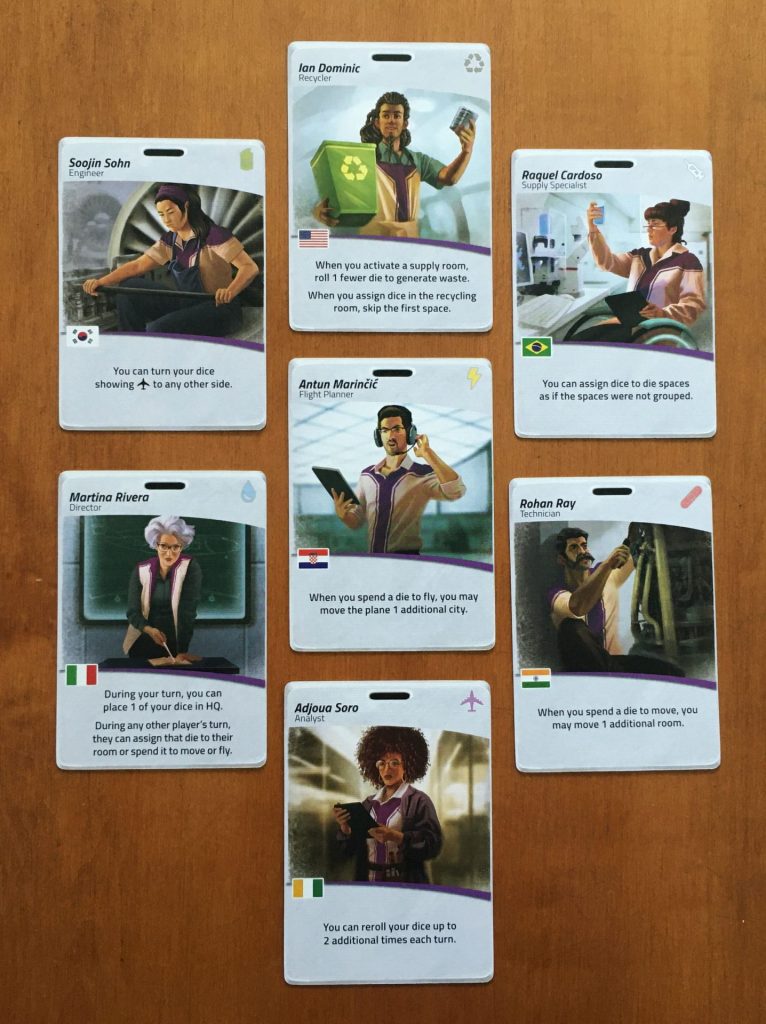
Players can also adjust the game’s difficulty in a few ways: modifying the number of City cards that start faceup on the board and in the facedown deck and/or adding Crisis cards to the game.
Crisis cards should only be used once you’re familiar with the game. One is revealed whenever the sand timer runs out and acts as an event with either a negative immediate, temporary, or delivery effect.
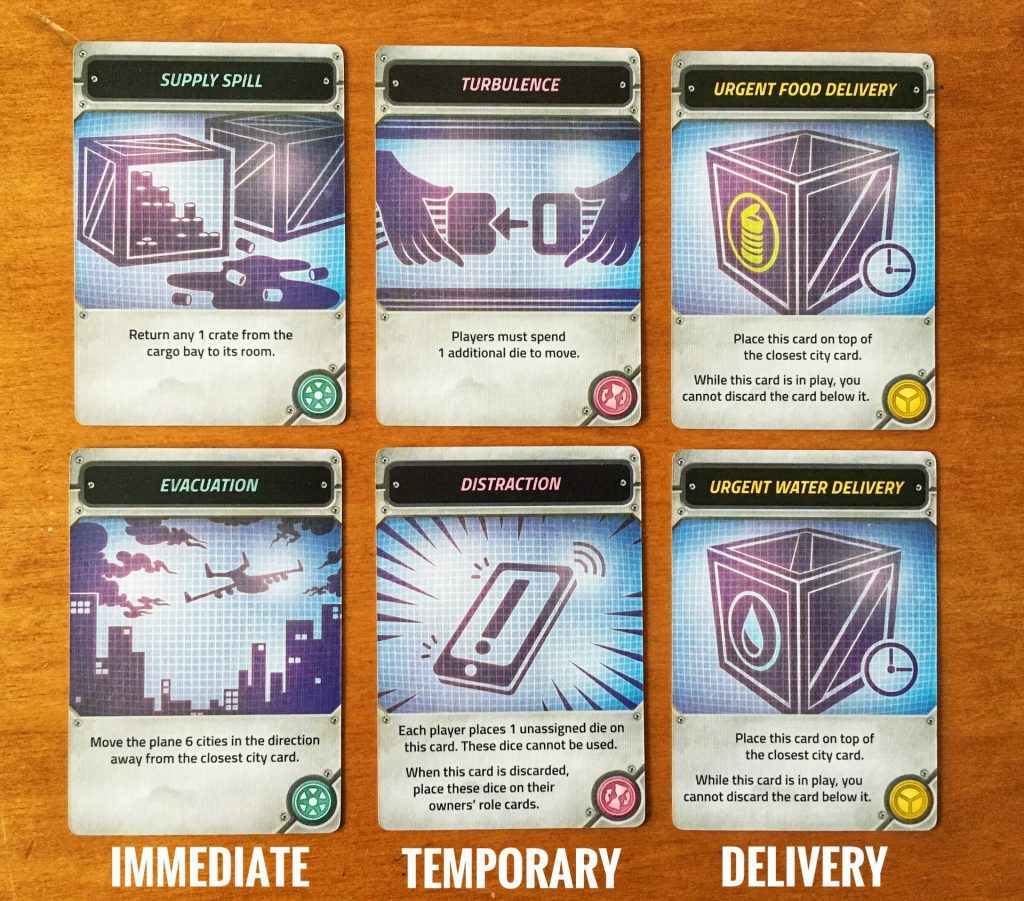
Final Thoughts
I remember my first play of Pandemic: Rapid Response well. France was playing the United States in the Women’s World Cup quarterfinal and I felt terribly conflicted — support my French heritage or support my favourite football player*? It was also an unbearably hot and humid summer day that marked the peak of a heat wave and there was that familiar smell in the air that meant a thunderstorm was a-coming. This was when my friends decided it would be perfect to host a board game day…even though they had no air conditioning. It was also the day I got to play two new real-time games, Tuki and Pandemic: Rapid Response, back-to-back.
What kind of kook suggests playing these games back-to-back while everyone is sweating around the gaming table? It was you Ashley, wasn’t it? I knew it!
Finally, this memorable day I learned something new about one of my good friends after she turned to me during our play of Pandemic: Rapid Response, completely flustered, and whispered, “Will you please play the rest of my turns for me?”
I share the details of my first game of Pandemic: Rapid Response with you as a warning to 1) not try to play this game in the summer heat without air conditioning and 2) remind you that this will not be everyone’s cup of tea. Pandemic: Rapid Response is a very stressful real-time game and you can’t assume everyone will be excited to play as you (like my poor friend who completely shut down when we were playing together).
Another friend playing that first game recently described Ashley’s excitement playing Pandemic: Rapid Response as “clapping hands, saying ‘more, more.’”🤦
The real-time element of the game adds a nice level of tension and stress, yet the game isn’t too chaotic because you’re playing in turn order and not simultaneously. I found that apart from the theme, the gameplay wasn’t quite “Pandemic-y”, but it was very Kane Klenko — and if you’ve enjoyed playing Klenko’s other real-time games, Pandemic: Rapid Response should be on your radar.
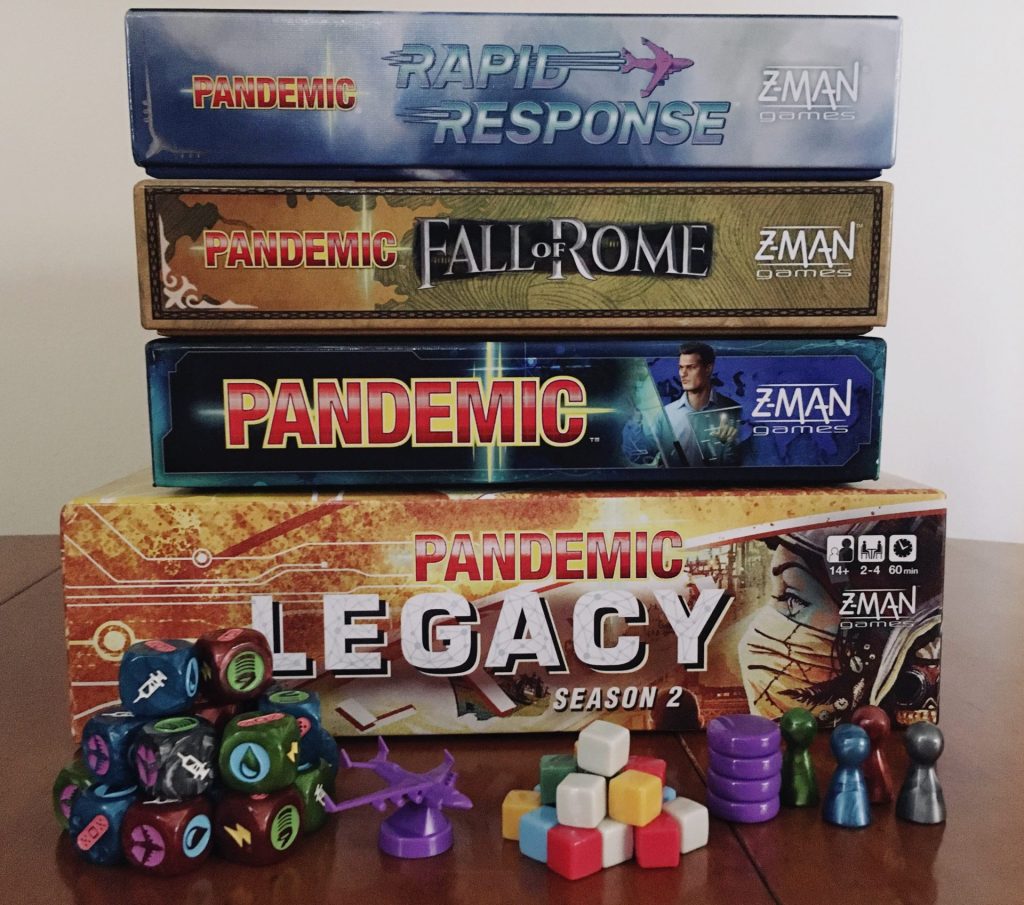
While I really enjoy the real-time nature of Pandemic: Rapid Response, my favourite elements of the game are the dice management and the unpredictability that comes from the City cards. You need to be careful to not lock up too many of your dice in too many areas, but at the same time you need many dice to make supplies and if you roll a lot of one symbol, it’s hard not to be tempted to assign them. I also like how you never know exactly which cities will be in your game; thematically I like to think of the City cards being revealed slowly because they represent the various cities in need at different times.
Ashley’s favourite way to play Pandemic: Rapid Response is using the Normal difficulty setup (seven City cards in total) with the Crisis cards. This provides the perfect challenge.
Pandemic: Rapid Response hits all the right notes for me: a stressful real-time experience designed by my favourite real-time designer Kane Klenko and set in the Pandemic universe (yes, even during these COVID-19 times). If you love Pandemic but aren’t a fan of real-time games, Pandemic: Rapid Response isn’t likely the game to be the exception. I think the best indicator of whether you should check out Pandemic: Rapid Response is if you enjoy other real-time games.
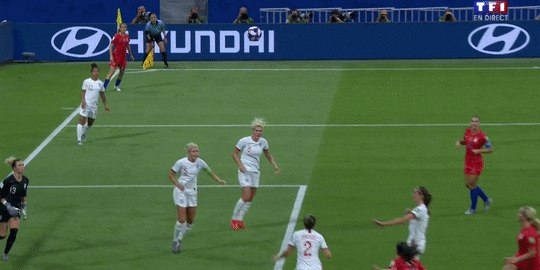
Thematic “Music” for Playing Pandemic: Rapid Response
What is more thematic than listening to the whir and rumble of a plane when you’re playing Pandemic: Rapid Response? Don’t worry, none of the links feature commercial plane noises; babies aren’t allowed on service planes, they’d only distract you from making supplies.


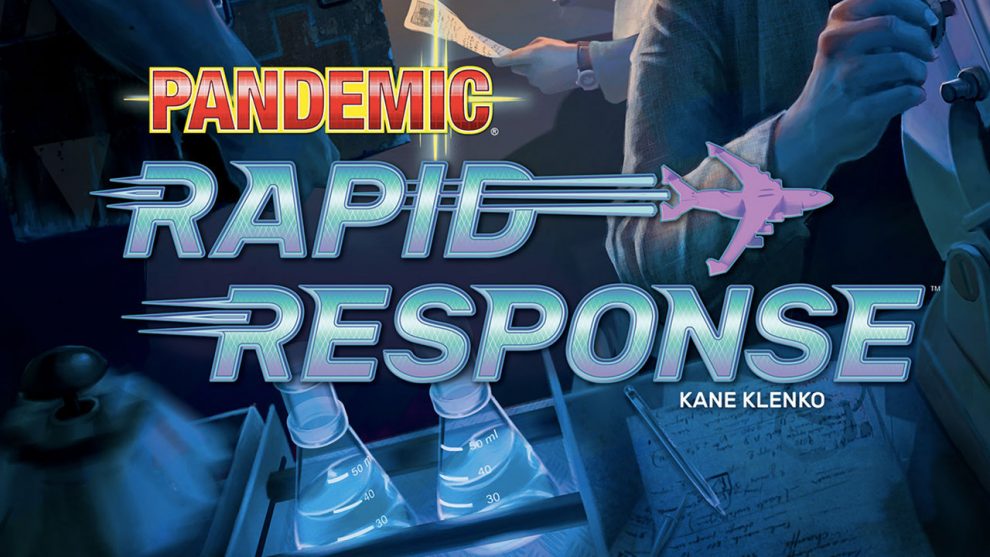
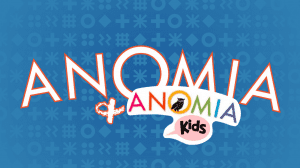

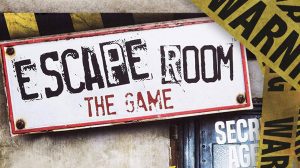



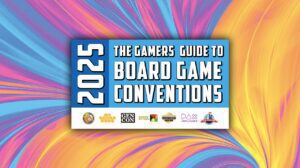
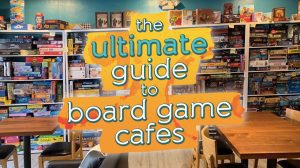
Good review I have been wondering about getting this version and this helps 🙂 thanks
Love Pandemic (all the ones I have played)
My pleasure! Thanks for taking the time to read the review and comment. Happy gaming : D